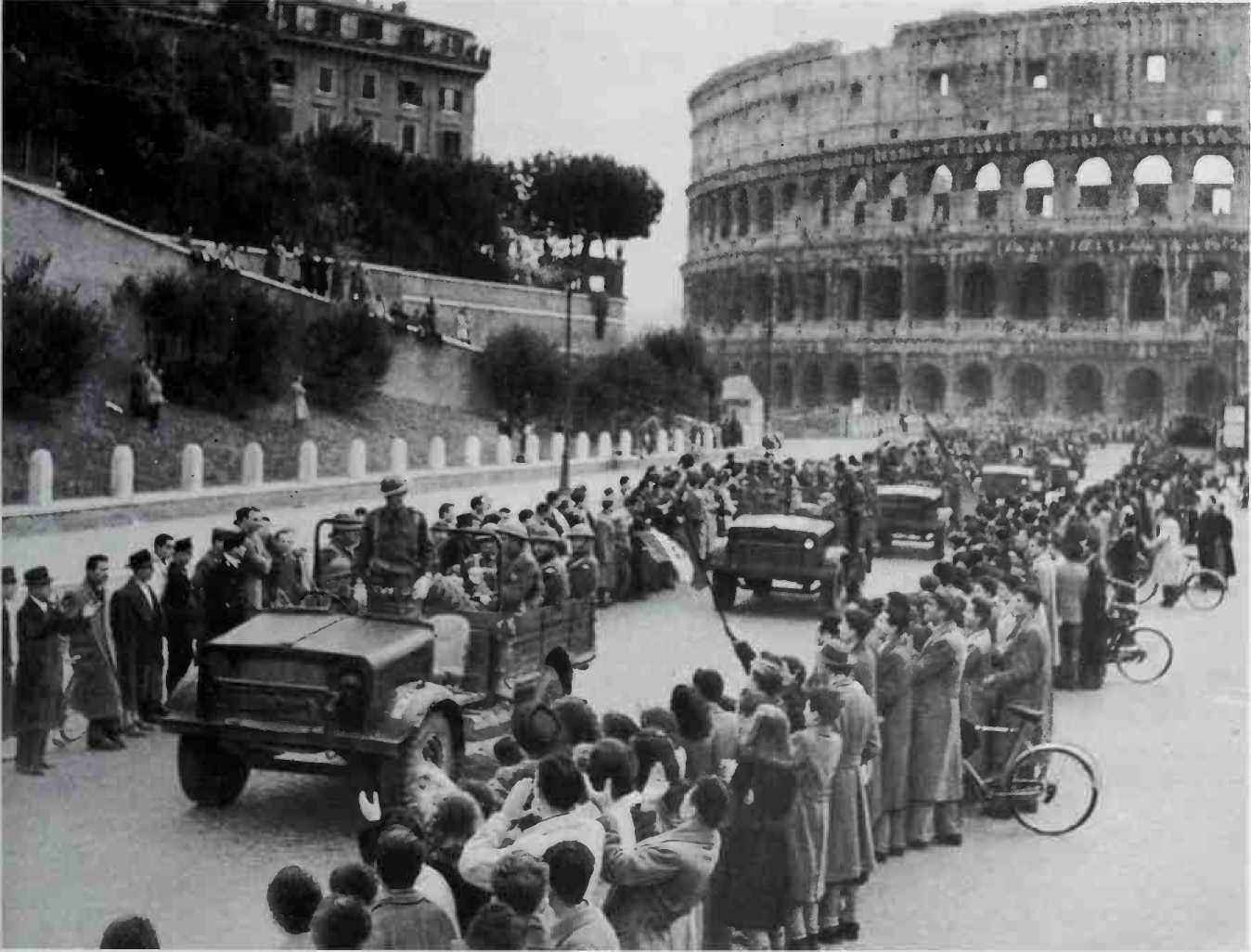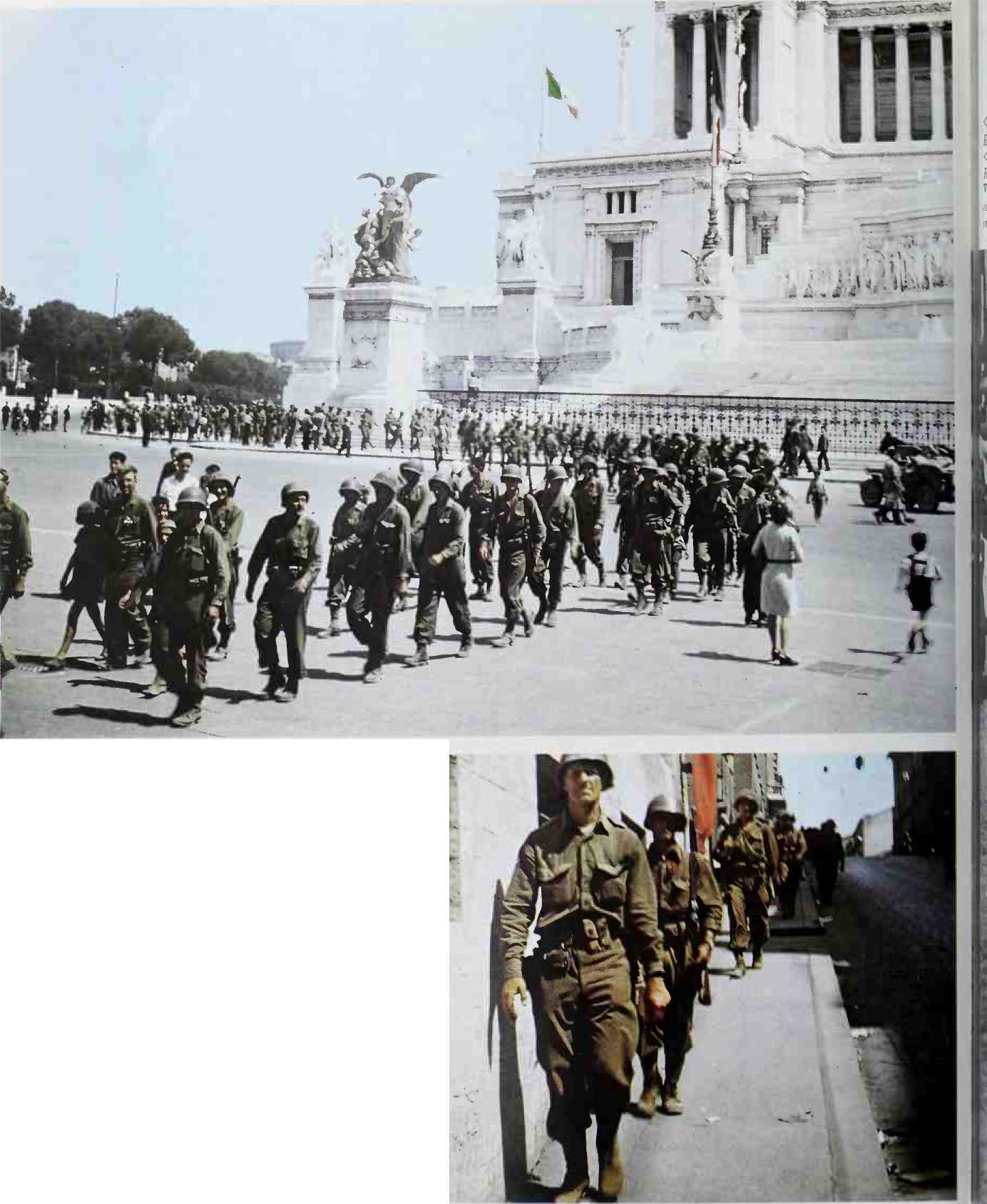These were words of wisdom indeed, but in Italy the die was cast in the shape of the objective given to the American VI Corps. On May 31 its 36th Division found a gap in the German 14th Army defences, turned the Velletri position and scaled the Colli Laziali. Furious at this setback, Kesselring recalled Mackensen and replaced him with General Lemelsen. He now had to order the evacuation of Rome, which he proclaimed an "open city”. On June 4 the American 88th Division (Major-General J. E. Sloan) was the first unit to enter the Eternal City.
General Clark tells a story worthy of inclusion in any history of the campaign. Writing of his first visit to Rome he says:
"Many Romans seemed to be on the


German and Allied losses
Verge of hysteria in their enthusiasm for the American troops. The Americans were enthusiastic too, and kept looking for ancient landmarks that they had read about in their history books. It was on that day that a doughboy made the classic remark of the Italian campaign when he took a long look at the ruins of the old Colosseum, whistled softly, and said, 'Geez, I didn’t know our bombers had done that much damage in Rome!’”
V Mark Clark talks to a priest outside St. Peter’s on his arrival in the city on June 4.
Through the Brenner there were badly trained divisions such as the 162nd, recruited from Turkman contingents, the Luftwaffe 20th Infantry Division, and the 16th Panzergrenadier Division of the Waffen S. S. These went to pieces at the first onslaught.
During the same period the Americans lost 18,000 killed, missing, and wounded, the British 10,500, the French 7,260, the Canadians 3,742, and the Poles 3,700. Some 25,000 Allied prisoners were taken.




 World History
World History









